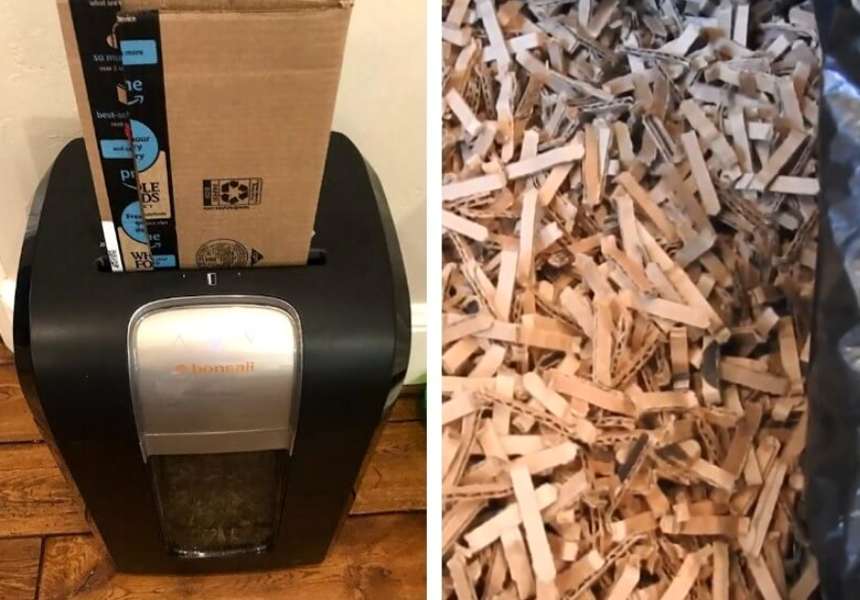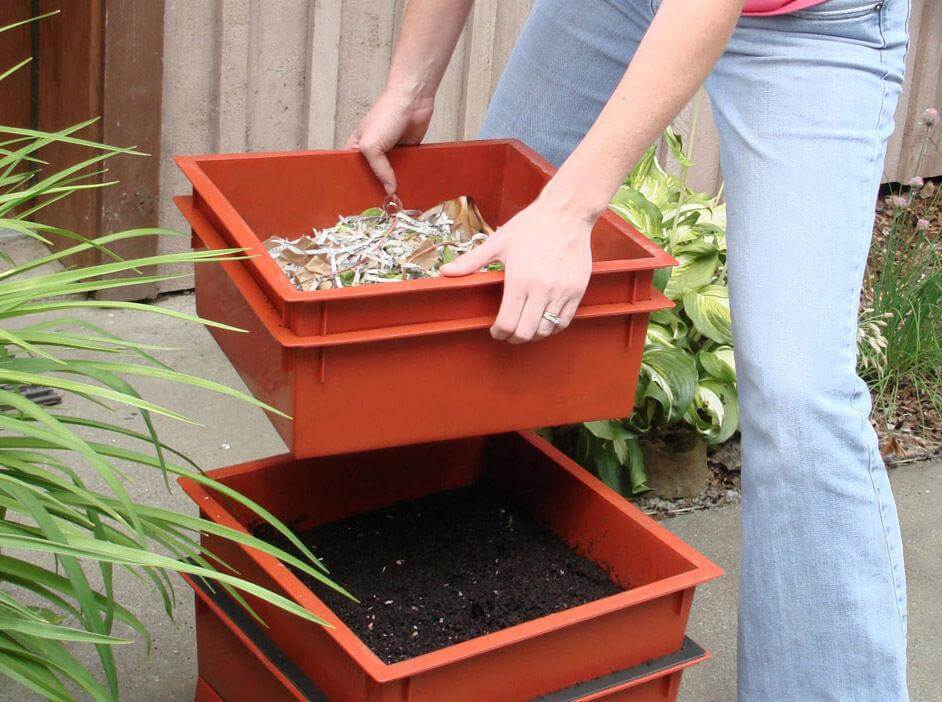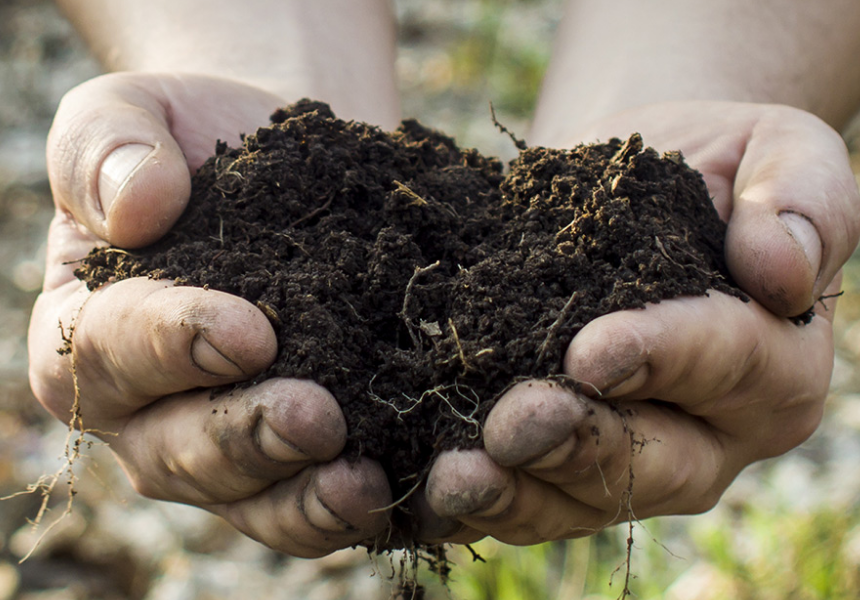
Composting at home is a fantastic way to limit your carbon footprint. When it comes to compost bins, these are a great way to limit your space and your patience at times. Bins for compost aren’t for everyone, unfortunately, nor do they suit everyone’s needs.
It’s hard to know how to compost without a bin without knowing what your options are. This article goes deep into the different methods of composting your food, garden, and pet waste. There are several different approaches to composting that provide the same benefits not only to the earth but to gardeners, pet owners, and the average everyday citizen.
Although bins are traditional for a reason, they aren’t the only option for composting connoisseurs. Composting still has a massively positive impact on the environment regardless of what you use for the compost container, from peanut butter jars to a trash can to a big black bag to a hole in your backyard.
Decomposition is a process that will happen during composting with or without a bin. No matter where you put the waste, it’ll decompose one way or another. Whether it’s in a puddle outside a wainwright Walmart, underneath a grove of apple trees, or along the highway in Connecticut, decomposition is happening all around us. The point of composting is to harness that process and make it more efficient on a smaller scale.
Forest Abbott-Lum (mem ’21), composer in residence at the Yale sustainable food program, explains that composting is when someone manages the proof of decomposition. The difference between decomposition and composting is intent. Decomposition happens organically in nature when a leaf falls, breaks down, and turns into humus (rich and dark organic matter). Composting, on the other hand, is instead human beings recreating the same process for a purpose.
The simple answer to this is no. You don’t need a bin to compost. The long answer is no, but you should have one. They aren’t a necessity, but they are the norm for a reason. They keep things neat, the area tidy, require little maintenance, and keep away pets, smells, and bugs. Add to that, and they are simple to use. You can essentially toss it in and forget about it. With bins, it’s very simple.
You can certainly get the benefits of composting without the bin. Take this into consideration when you look at composting.
When it comes to compost bin alternatives, you simply need something that will aid in the decomposition process. There are quite a few options for decomposition. However, these are typically more difficult than the average compost bin.
Compost piles are a great and natural way to assist in natural decomposition. However, this involves some know-how on composting fundamentals to get the best results. Start with a discrete and out-of-the-way spot in your yard that’s away from your home. The best spot would be one that receives sunlight during the day and has good drainage to avoid waterlogging or flooding.
From there, you add and mix the compost into the pile. Simply add it to the pile and wait for it to rot. This may sound rather silly, but this composting is being used by NASA in the online update “diary of a space zucchini,” where zucchini is grown within space with the aid of the space station’s compost pile.
Trash can compost pretty much what you would expect. This is a form of composting that does so in a trash can. It’s something that’s a staple in a lot of households. A black trashcan with a lid is your best bet, as the black color will keep the compost warm if you place it in the sunlight.
Using a bag for bag composting is interesting, to say the least. Unlike other forms of composting in this article, this compost is mostly anaerobic and isn’t exposed to oxygen. The major downside to this method is that it stinks. Anaerobic composting uses an assortment of microbes, which can produce nasty odors. Not only that, but these microorganisms take longer than our other options to decompose organic matter. Sturdy black garbage bags are typically the best for this. Like black garbage bags and dark tote containers, they heat up, and that heat speeds up decomposition.
Now, this isn’t a common or well-known form of composting, but it works. Also known as pit composting, this is essentially when you bury your compost. The biggest limitation is the need for space. To have the most efficient trench compost, you require a lot of space within your yard. Once a 12 inches pit or trench is dug, then it can be filled about halfway with waste. Cover it up and wait. All that compost would have decomposed in about six months to a year. After that, you can use it for amazing planting soil.
Be aware not to plant anything on top of this too soon. Because trench composting is an anaerobic process, it takes a fair amount of time. If you plant your vegetables, fruits, trees, flowers, or shrubs on top of the compost too soon, there’s a high risk of parasites and vermin impacting your garden.
However, if you have a lot of waste and a lot of space, you could easily use a system of crop rotation every year or two.
Over Americans have a compost pile, while nearly a third of Americans (33%) grow vegetables at home, and only 11% use a rain barrel. For most people, it’s worth it to have a proper compost bin. That may go against the title of this article, but bins are much easier to handle and maintain.
Bins are amazing for folks who:
What are other alternatives to bins? If you can imagine it, you can probably compost in it. They are dark, sealed containers. It’s not hard to make your compost bin. If it’s thick, opaque (meaning you can’t see through it), and it has a lid you can add air holes to, it can be used as a compost bin. Remember, the darker it is, the better. Dark containers keep the compost warm and speed up the process.
Considering the average apartment renter, there’s not much room to begin with. Add in a compost bin, and that space gets even smaller. Having a bin that you can tuck away is fantastic. Having a small bin that suits your needs and your space is even better. Typically, the containers that work the best here are some household items that can be used as DIY compost bins:
On the other hand, what won’t work for a compost container? Sadly, those hip mason jars won’t work because they can let in a lot of sunshine. Anything that’s been contaminated with meat, mold, pesticides, or other forms of chemicals would be counterproductive to decomposition or invite other forms of pests into your compost.
Do you need something bigger? Do you want to simply get a bin that’ll work without costing an arm and a leg? There are several affordable bins from a range of retailers. For example, the Vivosun outdoor tumbling composter dual rotating batch compost bin with a stylistic orange door. It’s a stunning compost bin that doesn’t shy away from a bold design. This bin not only holds up to a massive 43 gallons, but it also comes with two tumbling chambers to aid in maintenance. It makes things so much easier when it comes to maintaining the compost and speeding up the rate of decomposition. Add to its fantastic design, and it’s an affordable option for anyone looking for a heavy-duty outdoor compost bin.
The best kind of composting container is a small one, light in weight, and helps mitigate some of the smell. Consider something small like the utopia kitchen compost bin for the kitchen countertop. It fits up to 1.3 gallons of compost while coming with a charcoal filter for any odor. This compost bin especially is amazing for those that don’t have a lot of space for a large expansive bin or simply don’t have the budget.
Ensure a balance of brown and green materials. Too many “green” items like vegetable scraps, fruit, tea bags, coffee grounds, and greywater can leave your compost wet and slimy. Too many “brown” items like branches, paper, hair, ashes, hamster cage waste, or sawdust will take years to decompose.
Having a compost bin means that you have the freedom to choose what to do with your waste. You also have a nearly endless supply of fertilizer, seed starter, and potting soil that’s amazing for your plants. Composting has immense benefits for small-scale gardens as well as large-scale agriculture. Leslie Cooperband of the University of Wisconsin-Madison wrote for The Center for Integrated Agricultural Systems, discussing the use, science, and benefit of composting for American farmers.
The benefits of adding compost to soil include a special ability to chemical, physical, and biological characteristics of soils. Not only does it promote soil structure in clay-filled soils, but it encourages water retention in sandy soils as well as improves the stability of soil aggregates. She found that adding compost to soil increases soil fertility, further reducing fertilizer requirements by up to 50%.
Almost all forms of decomposition leave a smell. It is no different from the breaking down of organic material within your composting. However, there are ways to negate this by cutting the vegetables into small pieces, burying them at least an inch under the sedimentation, and adding additional newspaper on top.
Cold composting is what happens when the pile of compost is small, as microorganisms do the job. This is a slow decomposition.
This style of composting is a kind of pile compost where the pile is at least 4 feet wide and 3 feet high. This encourages the pile to warm up with the heat aiding in the decomposition.
Composting is a worthwhile way of honestly just getting rid of kitchen scraps. There’s a huge list of benefits that go beyond simple convenience, but there’s something to be said for composting to limit the use of garbage bags, the amount of food waste, to have a use for salad leftovers.
Beyond the ease of use and conveniences, composting is an amazing way to lower your carbon footprint. Not only does it limit the amount of waste you make, but it limits the amount of waste that you contribute to the landfill. How to compost without a bin doesn’t have to be a mystery. When it comes to at-home composting, there’s a lot to learn and a lot to take into careful consideration. However, it’s certainly worth it.





